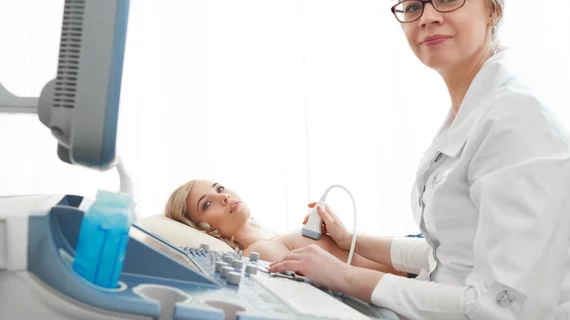Pairing ultrasound with artificial intelligence reduces unnecessary breast biopsies
Pairing ultrasound with an artificial intelligence assistant can help reduce unnecessary breast biopsies, according to research published Thursday.
US is the most widely used diagnostic tool to evaluate such abnormalities among women in China, but it is subject to variability based on the operator. To help address some of this variation, researchers tested out a commercially available, deep learning algorithm that can help discriminate malignant lesions from benign ones.
Testing the tool out on a set of 173 suspicious breast lesions, scientists found early success, warranting further exploration in a multi-center investigation with a larger sample size.
“In this study, we demonstrated that with the assistance of AI, a number of unnecessary biopsies can be avoided,” first author Xin-Yi Wang, with the Department of Ultrasound at Peking University Third Hospital in Beijing, and colleagues wrote in the European Journal of Radiology.
For the analyses, conventional ultrasound and AI analyses were performed on suspicious breast lesions prior to US-guided biopsy or vacuum-assisted excision. Wang et al. retrospectively reviewed images using the Breast Imaging Reporting and Data System lexicon and harnessed AI to hypothetically downgrade the severity, where possible.
AI ended up reducing 43 lesions diagnosed as BI-RADS category 4A (low likelihood of being cancer) down to category 3 (probably benign). Using a less aggressive stratification strategy, 14 biopsies were correctly avoided and the biopsy rate dropped from 100% down to 67.4%. A more aggressive second stratification strategy avoided 27 biopsies, with two malignances missed, and a biopsy rate of 37.2%. Wang et al. recommended the more cautious approach, however, for its lower misdiagnosis rate.
You can read much more about their results and how the AI tool operates in EJR here.

